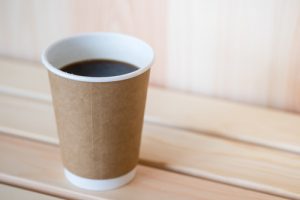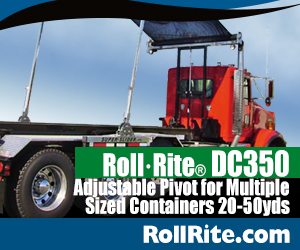 Washington, D.C. will join the ranks of a select few municipalities next year when it begins accepting a wider array of food-service packaging for recycling, including paper-based coffee cups.
Washington, D.C. will join the ranks of a select few municipalities next year when it begins accepting a wider array of food-service packaging for recycling, including paper-based coffee cups.
Starting Jan. 1, 2018, all residents and businesses within the district will be able – and, in fact, required – to recycle coffee cups as well as a variety of paper and plastic plates, cups, lids, trays, pizza boxes and more.
Surveys and studies
According to program leaders, the upcoming changes follow a number of studies and surveys that have revealed food-service packaging is more acceptable in the recycling stream than is generally believed, provided the right circumstances are in place. Through collaboration, the nation’s capital will put that data to the test.
“There’s work going on to help the MRFs in the area, to help them make any changes and help develop end markets locally,” said Annie White, manager of the office of waste diversion at the Washington D.C. Department of Public Works (DPW). “That is an area where both the district and industry have mutual aims to help grow the local recycling and recovery of this material.”
The decision was made in response to legislation in 2014 that set a timeline for increased diversion targets and additional program offerings. As part of that legislation, DPW was tasked with compiling a single, clear list of what was recyclable and compostable for residential and commercial recycling programs within the district.
To come up with such a list, DPW surveyed eight MRFs within a 45-mile radius of the district, identifying 70 product types and asking whether the MRFs accepted, rejected, or accepted but did not want those materials in their streams. Materials the majority of MRFs accepted were added to the list, and those rejected by most MRFs were removed.
That led DPW to remove films including LDPE bags and wrap from the local collection program – due to the tendency for film to clog up machinery. But the research also showed that most MRFs were willing to accept food-service packaging.
MRFs say they can take coffee cups
Coffee cups have been a particularly problematic product to recover in jurisdictions around the world. Consumers often assume they are recyclable due to their paper base, but the coating that provides a barrier to heat and moisture commonly derails recycling efforts. Stakeholders have worked to come up with solutions to facilitate recycling of coffee cups, but they remain a challenge for most recycling programs.
Cups today are typically manufactured using a paper stock base and a polyethylene coating, rather than the older method of wax coating.
The Washington, D.C. move to include the product in curbside recycling was driven by the fact that local MRFs stated during the recent survey process they would accept coffee cups. White also pointed to a Foodservice Packaging Institute (FPI) study that found polyethylene-coated paper cups and containers, which make up about a third of paper food-service packaging, are sometimes included in carton bales.
“The sheet of polyethylene separates fairly cleanly in a paper mill in the bath where it’s recycled. It tends to do very well,” White said. She added mills have reported different experiences in recovering the cups.
The FPI study also referenced current efforts to determine whether cups can be introduced to mixed-paper bales.
The district’s list of accepted materials will be updated every two years, with materials added or removed based on the MRF responses.
Concurrent with developing this list, the district announced a new requirement that all restaurants would need to use “recyclable” or “compostable” food-service packaging that fits certain definitions, ensuring the materials being introduced into the stream were compatible with what MRFs can accept.
That means, for example, that restaurants have to provide products made entirely of rigid plastics Nos. 1-6, made entirely of pulp or paper, or made of pulp or paper with a thin plastic coating.
Keeping markets front and center
As with all materials, the viability of recycling food-service packaging comes down to end markets.
“Everyone loves to talk about whether you can recycle those products,” said Lynn Dyer, president of the Foodservice Packaging Institute (FPI). “The short answer is yes. The longer answer is, you have to find the appropriate mill that’s able to take it.”
Another consideration is the fact that when food-soiled materials are introduced into the stream, cleanliness and quality are generally anticipated to drop.
“MRFs are concerned about contamination, they’re concerned that if you say you’ll accept food-service packaging you’re going to get a lot of food residue,” Dyer said.
But when an FPI effort looked at two case studies, Boston and Delaware, to gauge the actual amount of residue found within food-service packaging in MRFs, the results came in relatively low. In Boston, a study found “no appreciable difference in contamination rates” between food-service packaging and non-food-service packaging, with the exception of food-service corrugated containers which were slightly more contaminated.
And in Delaware, a study found food-service packaging and other standard recyclables that had come into contact with food had about the same levels of food residue.
Each case had its own qualifiers, such as Boston’s program having a penchant for very clean recyclables overall. But those results, mixed with other case studies detailing research in cities like Seattle and Torrance, Calif., have contributed to other programs taking the leap.
“I’m excited by our strategy and I think we’re on a good path,” White said. “We look forward to sharing our experiences and results so that other communities can learn from us.”
For more insight on recycling food-service packaging, attend the 2017 Resource Recycling Conference Aug. 28-30 in Minneapolis.



